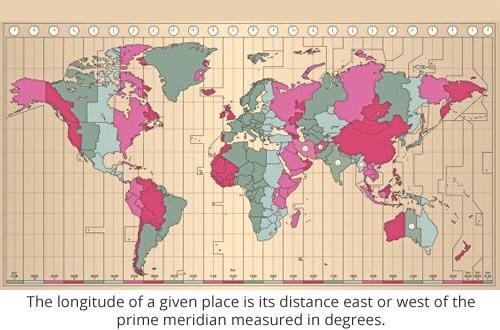Effects of Earth’s Rotation
Earth’s Rotation and Timekeeping
When you wake up at 1 o’clock after midnight, you may wonder why it is already called morning even though the sun has not risen yet. The time follows the ordinary legal day, which is called civil day, that begins at midnight and ends at the next midnight. The period from midnight to noon is called ante meridiem (a.m.) and from noon to midnight is post meridiem (p.m.).
Day and night take place as Earth continuously rotates on its axis with the passing of time. This concept can be experienced by those who travel from one place to another place on Earth with a different time zone. A traveler going westward must set his watch back by one hour for every 15° of longitude that he/she covers. If he/she travels eastward, he must set his watch forward by one hour for every 15°. To avoid confusion, the International Date Line was established at 180° meridian, which runs through the Pacific Ocean. When one crosses this line going west, the date jumps one day forward; for example, Tuesday becomes Wednesday. When the line is crossed eastward, the date jumps one day backward; for example, Tuesday becomes Monday.
Earth’s Rotation Affects the Winds
The rotation of Earth affects the wind or blowing air. If Earth does not rotate, the wind will blow from north to south and from south to north. As Earth rotates from west to east, the winds between the equator and the poles move in a circular pattern. The south-north flowing air over the equator gradually flows east. In temperate zones, winds from the north spiral to the right and the winds from the south twist to the left, thus creating the wind system.


